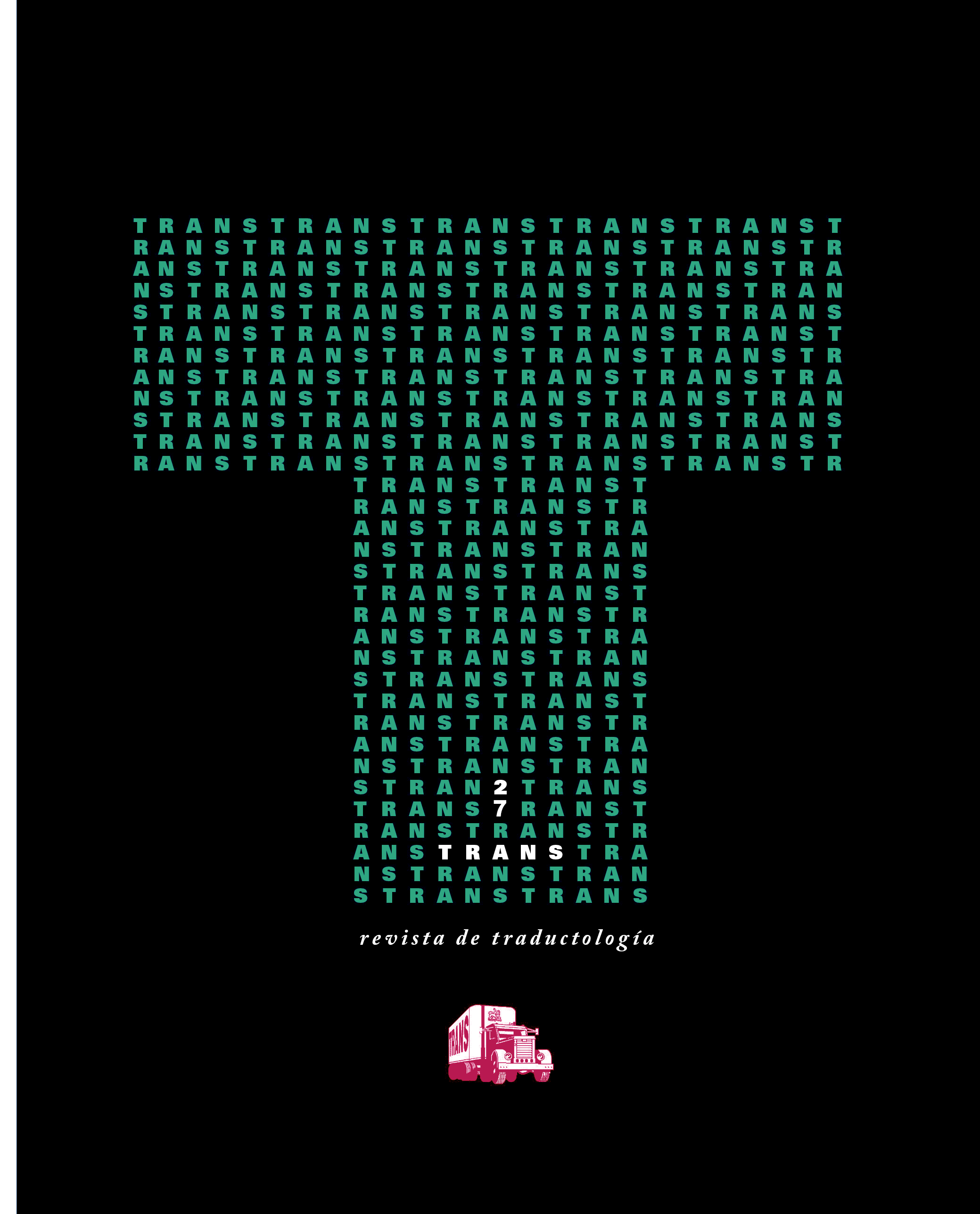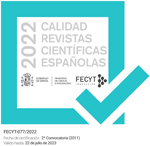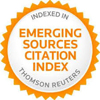“Then if it’s not him you mean, it must be her”: Gender determinacy and indeterminacy in Chinese-Spanish literary translation
DOI:
https://doi.org/10.24310/trt.27.2023.16208Keywords:
translation, gender, Chinese, SpanishAbstract
Unlike Spanish nouns, Chinese nouns show no grammatical gender. Spanish and Chinese use sign and function in different ways, and this creates difficulties for translators working with these languages. This becomes clear when translating nouns referring to people, and when the original text in Chinese does not describe gender information that the Spanish translation must specify. This paper seeks to shed light on the formulas used in Chinese to determine gender information that in Spanish is expressed through morphology. We identify the gaps that occur when gender determination is not available, and the translator needs to add new information that was not in the original text. Through the analysis of a corpus of seven Chinese short stories translated into Spanish, we confirm a tendency to resolve indeterminacy in an imbalanced way that prioritize masculine forms, as well as translational decisions that promote or consolidate stereotypes from the target culture.
Downloads
Metrics
Publication Facts
Reviewer profiles N/A
Author statements
Indexed in
-
—
- Academic society
- N/A
- Publisher
- Universidad de Málaga
References
Álvarez Sánchez, P. (2022). La traducción feminista inclusiva y sus ausencias en la práctica de la traducción literaria. Magazin, (29), 7-15. https://doi.org/10.12795/mAGAzin.2021.i29.01.
Arrojo, R. (1994). Fidelity and The Gendered Translation. TTR: traduction, terminologie, rédaction, 7(2), 147-163. https://doi.org/10.7202/037184ar
Baidu Baike (百度百科). (2022). 歌妓 [geji]. https://baike.baidu.com/item/歌妓/8553708?fr=aladdin
Beijing Daxue Zhongwen Xi Xiandai Hanyu Jiaoyanshi (北京大学中文系现代汉语教研室). (2006). Xiandai hanyu (现代汉语, Chino moderno). Shangwu Yinshuguan.
Bob, H., & Louie, K. (1998). The politics of Chinese language and culture: The art of reading dragons. Routledge.
Brufau Alvira, N. (2009). Traducción y género: Propuestas para nuevas éticas de la traducción en la era del feminismo transnacional. Tesis doctoral. Universidad de Salamanca.
Cao, X. (1977). The Story of the Stone: Vol. 2 ’The Crab-Flower Club’ (D. Hawkes, Trad.). Penguin Books.
Cao, X. (1998). Sueño en el Pabellón Rojo: Vol. 2 (X. Tu, Trad.). Universidad de Granada.
Castro, O., & Spoturno, M. L. (2020). Feminismos y traducción: Apuntes conceptuales y metodológicos para una traductología feminista transnacional. Mutatis Mutandis. Revista Latinoamericana de Traducción, 13(1), 11-44.
Castro Vázquez, O. (2008). Género y traducción: Elementos discursivos para una escritura feminista. Lectora, 14, 285-301.
Chan, M. K. M., & Lin, Y. (2019). Chinese Language and Gender Research. En C.-R. Huang, J.-S. Zhuo, & B. Meisterernst (Eds.), The Routledge Handbook of Chinese Applied Linguistics (pp. 165-181). Routledge.
Chao, Y. R. (2011). A Grammar of Spoken Chinese. The Commercial Press.
Corbett, G. G. (1991). Gender. Cambridge University Press.
Corbett, G. G. (2014). Gender typology. En G. G. Corbett (Ed.), The Expression of Gender. Walter de Gruyter.
Cuadra-Mora, B. (2022). Desafíos traductológicos en torno a la pluralidad en lengua china. Sendebar, 33, 125-143. https://doi.org/10.30827/sendebar.v33.23653
Díaz-Diocaretz, M. (1985). Translating Poetic Discourse: Questions on Feminist Strategies in Adrienne Rich. John Benjamins Publishing Company.
García Yebra, V. (1984). Teoría y práctica de la traducción. Segunda edición revisada: Vol. I. Gredos.
Ge, G. (2011). Shall I Name Her «Wisdom» or «Elegance»? Naming in China. Names, 59(3), 164-174. https://doi.org/10.1179/002777311X12976826704163
Hawkesworth, M. (1997). Confounding Gender. Signs, 22(3), 649-685.
He, Q., & Zhang, Y. (2006). A Talk on Traditional Chinese Culture: The Language Perspective. Zhejiang University Press.
Jakobson, R. (2000). On linguistic aspects of translation. En L. Venuti (Ed.), The Translation Studies Reader (pp. 113-118). Routledge.
Leng, C. (2013, septiembre 5). Lista de Ganadores. Spanish.china.org.cn. http://spanish.china.org.cn/specials/citc/2013-09/05/content_29936239.htm
Leng, C. (2014, mayo 27). El jurado del Concurso de Traducción Internacional de China 2013 acordó el jueves en Beijing comenzar la selección. Spanish.china.org.cn. http://spanish.china.org.cn/specials/citc/2014-05/27/content_32500341.htm
Li, C. N., & Thompson, S. A. (1989). Mandarin Chinese: A Functional Reference Grammar. University of California Press.
Lin, C.-J. C. (2019). Chinese Psycholinguistics. A typological overview. En C.-R. Huang, J.-S. Zhuo, & B. Meisterernst (Eds.), The Routledge Handbook of Chinese Applied Linguistics (pp. 773-785). Routledge.
Liu, C. (2012). Morfología contrastiva del chino mandarín y el español. Formas de gramaticalización y lexicalización [PhD Thesis]. Universidad de Valladolid.
McConnell-Ginet, S. (2014). Gender and its relation to sex: The myth of «natural» gender. En G. G. Corbett (Ed.), The Expression of Gender (Vol. 6). Walter de Gruyter.
Meng, L. (2020). Translating Gender from Chinese into English: A Case Study of Leaden Wings from Feminist Perspective. Cogent Arts & Humanities, 7(1). https://doi.org/10.1080/23311983.2020.1853894
Newmark, P. (1982). A Textbook of Translation. Pergamon Press.
Norman, J. (1988). Chinese. Cambridge University Press.
Ortega y Gasset, J. (2012). Miseria y esplendor de la traducción. Trama & Texturas, 19, 7-24.
Real Academia Española y Asociación de Academias de la Lengua Española. (2009). Nueva gramática de la lengua española. Espasa.
Santaemilia, J. (2014). Gender, Sex and Translation. The Manipulation of Identities. Routledge.
Simon, S. (2005). Gender in Translation. Cultural Identity and the Politics of Transmission. Routledge.
Steiner, G. (2001). Después de Babel (A. Castañón, Trad.). Fondo de Cultura Económica.
Topf Monge, G. S. (2020). Cuando "man" equivale a "una". Las ambigüedades de género en la obra de Annemarie Schwarzenbach y su traducción (feminista) del alemán al español. Tesis doctoral. Universidad Pablo de Olavide. RIO: Repositorio Institucional Olavide.
Tymoczko, M., & Gentzler, E. (2002). Translation and Power. University of Massachusetts Press.
Van de Weijer, J., Ren, G., van de Weijer, J., Wei, W., & Wang, Y. (2020). Gender identification in Chinese names. Lingua, 234. https://doi.org/10.1016/j.lingua.2019.102759
Venuti, L. (1995). The translator’s invisibility: A history of translation. Routledge.
Von Flotow, L. (2014). Tracing the Context of Translation. The Example of Gender. En J. Santaemilia (Ed.), Gender, Sex and Translation. The Manipulation of Identities (pp. 39-51). Routledge.
Von Flotow, L. (2019). Translation. En R. T. Goodman (Ed.), The Bloomsbury Handbook of 21st-Century Feminist Theory (pp. 229-243). Bloomsbury Publishing Plc.
VV. AA. (2015). Colección de Obras Ganadoras del I Concurso de Traducción Internacional de China. Ediciones en Lenguas Extranjeras.
Wang, L. (王力). (1985). Zhongguo Xiandai Yufa (中国现代语法, Gramática moderna de China). Shangwu Yinshuguan.
Yang, J. (2017). Aproximación a los marcadores de género en chino. Círculo de Linguística Aplicada a la Comunicación, 70, 223-238. http://dx.doi.org/10.5209/CLAC.56324
Zhongguo Shehui Kexue Yuan Yuyan Yanjiusuo Cidian Bianji Shi (中国社会科学院语言研究所词典编辑室). (2016). Xiandai Hanyu Cidian (现代汉语学院, Diccionario de chino moderno) (7.a ed.). Shangwu Yinshuguan.
Downloads
Published
How to Cite
Issue
Section
License
Copyright (c) 2023 Belén Cuadra Mora

This work is licensed under a Creative Commons Attribution-NonCommercial-ShareAlike 4.0 International License.
All contents published in TRANS. Revista de Traductología are protected under the Creative Commons Attribution-NonCommercial-ShareAlike 4.0 International (CC BY-NC-SA 4.0) license. All about this license is available in the following link: <http://creativecommons.org/licenses/by-nc-sa/4.0>
Users can copy, use, redistribute, share and exhibit publicly as long as:
- The original source and authorship of the material are cited (Journal, Publisher and URL of the work).
- It is not used for comercial purposes.
- The existence of the license and its especifications are mentioned.
- ShareAlike — If you remix, transform, or build upon the material, you must distribute your contributions under the same license as the original.
There are two sets of authors’ rights: moral and property rights. Moral rights are perpetual prerogatives, unrenounceable, not-transferable, unalienable, imprescriptible and inembargable. According to authors’ rights legislation, TRANS. Revista de Traductología recognizes and respects authors moral rights, as well as the ownership of property rights, which will be transferred to University of Malaga in open access.
The property rights are referred to the benefits that are gained by the use or the dissemination of works. TRANS. Revista de Traductología is published in an open access form and it is exclusively licenced by any means for doing or authorising distribution, dissemination, reproduction, , adaptation, translation or arrangement of works.
Authors are responsable for obtaining the necessary permission to use copyrighted images.













21.png)
